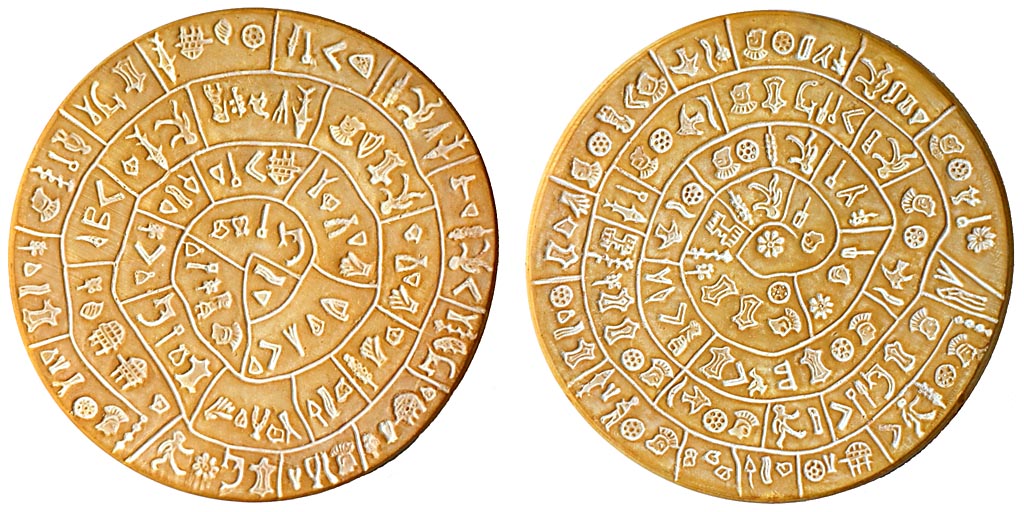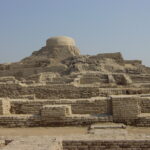Introduction
The Phaistos Disc is one of archaeology’s greatest mysteries, a small, circular clay disc covered in a spiraling sequence of symbols that no one has yet managed to fully decode. Found in Crete in 1908, the disc has fascinated scholars, codebreakers, and history enthusiasts for over a century. Despite numerous theories, debates, and even controversies, the true purpose and origin of this artifact remain unsolved. In this post, we’ll dive into the known facts, scientific findings, popular theories, and some myths surrounding the Phaistos Disc.
Table of Contents
- What is the Phaistos Disc?
- Discovery and Background
- Symbols and Language: What Do They Mean?
- Major Theories and Interpretations
- Debunking Popular Myths
- The Unresolved Mystery
- Conclusion
What is the Phaistos Disc?

The Phaistos Disc is a circular artifact made of fired clay, measuring about 16 cm (6.3 inches) in diameter. Its surface is embossed with a unique set of symbols arranged in a spiral pattern, a layout that has captivated linguists and historians since its discovery. This disc has symbols imprinted on both sides, featuring 242 symbols in total, including images of people, animals, tools, and abstract shapes.
Unlike any other writing systems known to ancient civilizations in the Mediterranean, the symbols appear to have been stamped onto the clay while it was still soft, implying a form of “printing” rather than the typical carving or engraving. This strange find has only deepened the enigma surrounding the Phaistos Disc.
Discovery and Background
The disc was unearthed by Italian archaeologist Luigi Pernier in 1908 at the Minoan palace of Phaistos on the Greek island of Crete. Its discovery site, Phaistos, was a major Minoan city and trade center during the Bronze Age, around 1700 BCE.

Since it was discovered within a Minoan archaeological context, researchers initially speculated that the disc might be connected to the Minoan civilization, yet none of the known Minoan scripts, such as Linear A or B, resemble the symbols on the disc. Additionally, the Phaistos Disc’s unusual construction and distinct iconography make it unlike any known artifact from the period, sparking debates about its origin, purpose, and meaning.
Symbols and Language: What Do They Mean?
The disc’s symbols are organized in a spiral that moves from the outside edge inward to the center. This distinctive style, combined with the iconography, has led to speculation that the disc might contain a form of ancient text, a religious chant, or even a game board.

Some prominent features of the disc include:
- Unique Symbols: A total of 45 unique symbols are stamped repeatedly to create the text-like sequence. These include recognizable items like human heads, plumed helmets, and animals, but many remain ambiguous.
- Unknown Language: Despite countless attempts to link the symbols to known languages, no definitive conclusion has been reached. Some believe the symbols represent syllables, while others see them as logograms (symbols representing words or concepts).
Major Theories and Interpretations
Over the years, several theories have attempted to unravel the meaning of the Phaistos Disc. Here are some of the most prominent:
- Religious Text: Some scholars argue that the disc contains a religious hymn or chant. They hypothesize that it might have been used in ritualistic practices due to its resemblance to certain religious artifacts from other ancient cultures.
- Calendrical Device: Others believe that the disc represents a type of calendar, potentially marking important seasonal events or Minoan festivals. The spiral shape and repeated patterns might support this theory, although no concrete evidence has confirmed it.
- Inventory List or Legal Document: Another theory suggests the disc could be an inventory or legal document listing items, places, or rules. This idea is based on the disc’s resemblance to other ancient lists and inventories found across the Mediterranean.
- Record of a Journey: Some theorists propose that the disc describes a journey, given the sequence and variety of symbols that could imply a narrative.
While each of these theories has gathered some following, none have fully explained all aspects of the disc or gained wide acceptance in the scholarly community.
Debunking Popular Myths
The allure of the Phaistos Disc has naturally attracted its share of myths and misunderstandings. Let’s debunk a few of the most common ones:
- Aliens and Extraterrestrial Technology: Some fringe theories suggest the disc was a gift from extraterrestrial beings or proof of alien visits to Earth. However, these ideas lack any archaeological or scientific evidence and are generally regarded as pseudoscience.
- A Hoax: Since its discovery, some skeptics have argued that the Phaistos Disc could be a forgery, created either in antiquity or even by Pernier himself. However, extensive analyses of the clay, symbols, and the context of its discovery confirm that the disc likely dates back to the Minoan period, dismissing the hoax theory.
- A Hidden Code: Popular culture has promoted the idea that the disc contains a cryptic code waiting to be cracked, perhaps even offering insights into lost knowledge or wisdom. Although intriguing, the absence of similar symbols elsewhere and lack of corroborative evidence make it unlikely that the disc hides a cryptographic message.
The Unresolved Mystery
Despite advances in linguistics, cryptography, and computer-assisted analysis, the Phaistos Disc remains a historical enigma. Each new attempt to decipher it adds another layer to its mystery. Modern linguists and archaeologists continue to study the symbols using advanced imaging and comparative techniques in hopes of finding a breakthrough. However, without additional artifacts bearing similar symbols or a “Rosetta Stone” equivalent, it’s unlikely that we’ll crack the code anytime soon.
Conclusion
The Phaistos Disc captivates because it stands as a testament to the limits of our understanding of ancient civilizations. As much as it frustrates historians, the disc also fuels imaginations and inspires ongoing exploration into our shared past. Whether it was a religious artifact, an ancient calendar, or something entirely unexpected, the Phaistos Disc reminds us of the many mysteries that remain hidden within history, waiting to be uncovered.
Sources:
- Evans, Arthur. The Palace of Minos. Macmillan, 1921.
- Godart, Louis, and Olivier, Jean-Pierre. The Phaistos Disc: An Enigmatic Minoan Artifact. University of Texas Press, 1995.
- Duhoux, Yves. “Le Disque de Phaistos.” Crete in Antiquity, vol. 10, 2005, pp. 12-45.

